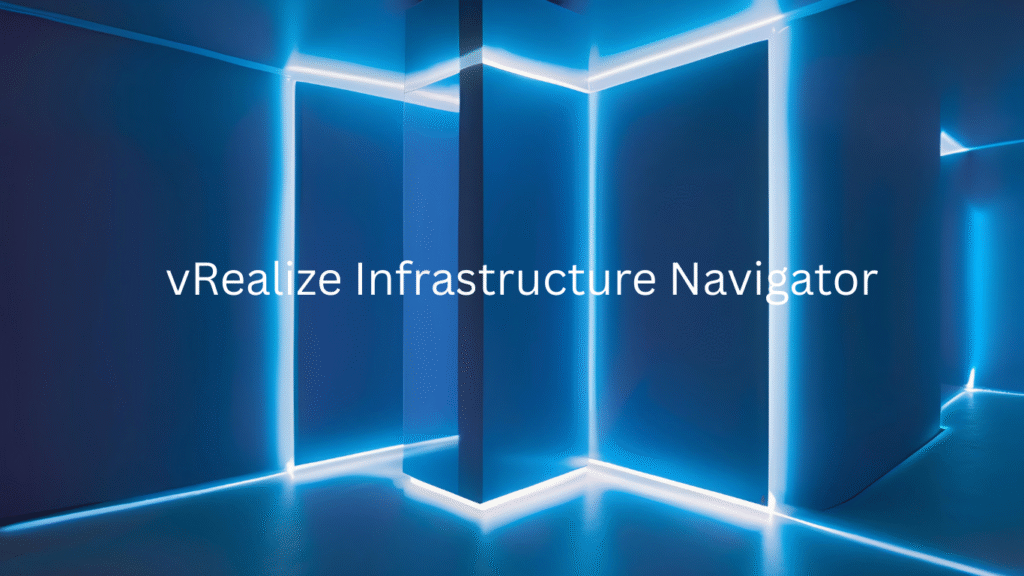vRealize Infrastructure Navigator is a powerful tool from VMware that helps organizations understand the complex relationships within their virtualized environments. It is designed to automatically discover application services and dependencies between virtual machines running on vSphere. This visibility makes it easier for IT teams to manage applications, plan migrations, and troubleshoot performance issues.
In most data centers, applications are rarely isolated. They often depend on multiple servers, databases, and services that need to work together for smooth performance. Without a proper dependency mapping solution, IT teams struggle to identify how one virtual machine or service impacts another. This is where vRealize Infrastructure Navigator proves its value.
By integrating directly with the vSphere Web Client, it delivers a simple interface that shows real-time maps of application relationships. These insights not only support daily operations but also play a crucial role in disaster recovery planning, security auditing, and compliance checks. For organizations adopting cloud strategies, this tool becomes an essential step in preparing workloads for migration.
In short, vRealize Infrastructure Navigator eliminates guesswork, reduces downtime risks, and ensures that IT teams have clear visibility into the entire application ecosystem.
Key Features and Capabilities
One of the main strengths of vRealize Infrastructure Navigator lies in its ability to automatically discover application dependencies. It identifies services running on virtual machines and maps how they communicate with other machines in the environment. This feature saves countless hours of manual documentation and makes the entire process more accurate.
The tool offers layered dependency views, which allow administrators to see relationships at different levels, such as between applications, servers, or network connections. These views can be customized, helping teams focus only on what is most important to their task.
Another key capability is its tight integration with VMware vSphere. Since many enterprises already rely on vSphere for virtualization, adding Infrastructure Navigator does not require additional complex setup. It works seamlessly within the existing ecosystem.
Additionally, the tool supports application discovery for a wide range of services like web servers, database systems, and messaging queues. These discoveries help in performance monitoring and provide a clearer picture of which applications are most critical.
With these features, IT teams gain a better understanding of risks, dependencies, and resource requirements, making vRealize Infrastructure Navigator a valuable tool for both operations and strategic planning.
Benefits for IT Operations and Business Continuity
The most immediate benefit of vRealize Infrastructure Navigator is improved visibility into the IT environment. By understanding dependencies, administrators can troubleshoot issues faster and with more confidence. For example, if one virtual machine experiences downtime, the tool helps identify which applications are affected, allowing teams to respond more effectively.
Another advantage is during maintenance and upgrade cycles. Without dependency mapping, making changes to infrastructure can be risky. An upgrade to a database server could unknowingly disrupt multiple applications. With Infrastructure Navigator, such dependencies are visible in advance, allowing IT teams to plan carefully and avoid downtime.
Business continuity planning also becomes more reliable. Disaster recovery strategies depend heavily on knowing which systems are critical and how they are connected. By providing accurate maps of services and dependencies, the tool ensures that recovery plans are based on real data rather than assumptions.
For businesses moving to the cloud, vRealize Infrastructure Navigator reduces migration risks. It ensures that workloads are not moved in isolation, but with all their dependent services. This minimizes the chance of broken applications after migration.
Overall, the tool strengthens IT operations, reduces risk, and ensures smoother business continuity planning, directly contributing to higher availability and better customer satisfaction.
Integration with VMware Ecosystem
vRealize Infrastructure Navigator works best as part of the larger VMware ecosystem. It integrates directly with vSphere, which means IT teams can view application dependencies from the same platform they use for managing virtual infrastructure. This simplifies workflows and reduces the need for switching between multiple tools.
It also complements other VMware solutions such as vRealize Operations. While vRealize Operations focuses on performance monitoring and analytics, Infrastructure Navigator provides the context of application relationships. Together, they create a more complete picture of the IT environment, allowing teams to make smarter decisions.
In security and compliance scenarios, the tool plays a supporting role by highlighting communication patterns between servers. This helps identify unauthorized connections or services that may pose risks. When paired with VMware’s security solutions, it strengthens overall governance and compliance.
For organizations using VMware’s hybrid cloud or multi-cloud strategies, vRealize Infrastructure Navigator becomes a bridge between on-premises infrastructure and cloud platforms. Its mapping capabilities provide clarity on what can be moved, what should stay, and how workloads will interact after migration.
Through its seamless integration, Infrastructure Navigator proves to be a valuable component of VMware’s suite, enabling enterprises to maintain better control and visibility across their IT landscape.
Conclusion
vRealize Infrastructure Navigator is a powerful tool that simplifies the complexity of virtualized environments. By offering automated discovery of application services and mapping their dependencies, it provides IT teams with valuable insights that are otherwise difficult to obtain. From troubleshooting and maintenance to disaster recovery and cloud migration, the tool plays an important role in ensuring business continuity and reducing risk.
Its integration with VMware’s ecosystem makes it easy to adopt and use without adding unnecessary complexity. For organizations looking to strengthen visibility, improve planning, and support smooth digital transformation, vRealize Infrastructure Navigator remains an essential solution.
FAQs
What is vRealize Infrastructure Navigator used for
It is used to automatically discover application services and map dependencies between virtual machines in a VMware vSphere environment.
How does it help with disaster recovery
By showing which systems depend on each other, it ensures recovery plans address all critical components, reducing downtime risks.
Can it support cloud migration
Yes, it helps identify and map dependencies, making cloud migrations safer by ensuring workloads move with their connected services.
Is it integrated with VMware vSphere
Yes, it integrates directly with vSphere, allowing users to view application dependencies within the familiar interface.



